|
constructional |
конструкционный |
|
|
fracture |
разрыв, |
|
|
urgent |
[′ə:dჳənt] |
насущный, срочный |
|
capacitor |
конденсатор |
|
|
brazed |
паяльный |
|
|
shielding |
покрытие, обшивка, |
|
|
debris |
[′debrI:] |
обломки, мусор, |
|
partially |
[′pɑ:əlI] |
частично |
|
yttrium |
[′ItrIum] |
иттрий (металл) |
|
rare |
[rεə] |
редкий |
|
alkaline-earth |
земельно-щелочной |
|
|
procedure |
[prə′sI:dჳə] |
методика, процедура |
|
pre-assigned |
[prIə′saInd] |
предопределенный |
|
fretting |
фрикционная |
|
|
tribo-conjugation |
соединение |
|
|
heavy-duty |
мощный, сверхмощный, |
|
|
many-fold |
многократный |
|
|
reliability |
[rI/laIə′bIlItI] |
надежность |
|
valve |
клапан |
|
|
guide |
[gaId] |
направляющее |
Vocabulary development: word building
Суффикс —ness
образует от прилагательных существительные
со значением обладания качеством,
выраженным прилагательным и соответствует
в русском языке суффиксу -(н)ость:
toughness
– прочность; inertness
– инертность; hardness
– твердость.
Grammar study: Continuous Tense Passive
Continuous
Tense
Active
употребляется для выражения действия,
совершающегося в настоящем, прошедшем
или будущем, в момент речи или указанный
отрезок времени. Continuous
Tense
образуется с помощью вспомогательного
глагола to
be
в соответствующем времени и причастия
настоящего времени смыслового глагола
– to
be+Participle
I.
Sample:
The
chemist
is
studying
new
compound.
– Химик изучает новое соединение (в
данный момент).
Continuous
Tense
Passive
употребляется для выражения действия
совершаемого в настоящий момент или
определенный период времени в прошлом.
Пассивная форма во Future Continuous в английском
языке отсутствует. Образуется Continuous
Tense Passive по формуле страдательного залога
to be+Participle
II,
при этом вспомогательный глагол to
be
принимает форму Continuous
Tense.
Samples
from the text: Cermets are
being used…–
Металло-керамики
используются…
.
More
complex materials are
being utilized…
–
Более сложные материалы используются
….
Some
types of cermets are
also being
considered
… –
Некоторые
виды
металлокерамик
также
учитываются…
Text
Read
the text telling about new materials
Development of New Materials
Development
of new constructional nonmetallic materials characterized by high
strength and fracture toughness as well as chemical inertness in
combination with high resistance to aggressive media over a wide
temperature range is an urgent problem of modern science of
materials. One of such materials is cermet – the composition of
ceramics and metal. A cermet is ideally designed to have the optimal
properties of both a ceramics, such as high temperature resistance
and hardness, and those of a metal, such as the ability to undergo
plastic deformation. The metal is used as a binder for an oxide,
boride, carbide, or alumina. Generally, the metallic elements used
are nickel, molybdenum, and cobalt.
Cermets are
used in the manufacture of resistors (especially potentiometers),
capacitors, and other electronic components which may experience high
temperatures. Cermets are being used instead of tungsten carbide in
saws and brazed tools due to their superior wear and corrosion
properties. More complex materials, known as Cermet 2 or Cermet II,
are being utilized since they give considerably longer life in
cutting tools. Some types of cermets are also being considered for
use as spacecraft shielding as they resist the high velocity impacts
of micrometeoroids and orbital debris much more effectively than more
traditional spacecraft materials such as aluminum and other metals.
Another
prominent constructional material is partially stabilized zirconia
(PSZ). It is a solid solution of zirconium dioxide with small
additions of yttrium, calcium or magnesium and other rare earth and
alkaline-earth metal oxides. Ceramic (polycrystalline) types of these
materials are extensively used worldwide today.
The
technology for manufacture of new synthetic cubic zirconia (fianit)
was originated by General Physics Institute of the Russian Academy of
Sciences in the seventies when it developed a procedure for cold
melting dielectric materials.
The new
technology of synthesis of single crystals is highly efficient and
the project completely meets the ISTC (International Science and
Technology Centre) tasks and goals because the specific technologies
and methods previously developed for military application will be
used for synthesis and investigation of new advanced materials for
wide peaceful use.
Experimental
data accumulated by the authors of the project provide evidence for
principle possibility to govern synthesis of PSZ crystals with a
variety of pre-assigned physico-chemical properties that may be used
to produce components of various applications, such as:
-
cutting tools in machinery
and medicine; -
components of spacecraft
equipment; -
heavy-duty
units with resistance to thermal stress and fretting corrosion for
aerospace application; -
Tribo-conjugations in car and
air craft engines; -
Sliding and rolling bearings
and other heavy-duty friction units for operation under extreme
conditions.
The
governable synthesis technology will guarantee a many-fold increase
in reliability and service life of equipment operating under extreme
mechanical stress, corrosive media, radiation, intense
electromagnetic fields, elevated temperature, absence of lubrication,
etc. (bearings, engine values, dies, guides, cutters, prisms in
precise equipment).
Exercise
1.
Write
out of the text the derivative words with the given suffixes, define
the parts of speech of the derived and original words and translate
them:
-ive, -ic, -ture, -al.
Exercise
2.
Pay
attention to different meanings of the conjunction “as” and
translate it in the following contexts:
-
Development
of new materials with nigh strength as
well as
chemical inertness is very urgent task. -
Cermet
possesses such properties as
high temperature resistance. -
Cermet has
the properties of metal, such as
the ability to undergo plastic deformation. -
The metal
is used as
a binder for some substances. -
More
complex materials, known as
Cermet 2, are used in cutting tools. -
Some types
of cermets are being utilized as
spacecraft shielding as
they greatly resist the impacts of orbital debris. -
Cermet
shielding resists the high velocity impacts of meteorites more
effectively than traditional materials such as
aluminum or other metals. -
PCZ
crystals may be used in various applications, such as
cutting tools in machinery.
Exercise
3.
Complete
the sentences:
-
New
constructural materials are characterized by the properties: … -
The
problem of modern science of materials is the development … -
New
material, cermet, is the composition of … -
Cermets
are used in devices and components which experience … -
Another
prominent constructional material is PSZ- … -
The
manufacture of fianit was originated by … -
The
synthesis of single crystals may be used for … -
A variety
of pre-assigned properties of crystals may be used to produce … -
The
governable synthesis will guarantee …
Exercise
4.
Insert
the proper words into the sentences:
-
(Разработка)
of new materials is very important task. -
Constructional
materials are characterized by (высокой
стойкостью)
and (прочностью
на
излом). -
Such
materials (выдерживают)
aggressive media and high temperatures. -
Cermet
possesses (свойствами)
of both a ceramics, and of metals. -
Cermet
(может
подвергаться)
to plastic deformation. -
The metal
is used as (связующее
вещество)
for some materials. -
Cermets
have
(чрезвычайную износоустойчивость) and
(антикоррозийные свойства). -
Cermets
give longer life to (режущим
инструментам). -
General
Physics Institute developed (методику)
for cold melting dielectric materials. -
The
new
technology
(удовлетворяет) the
(международным техническим стандартам).
Exercise
5.
Choose
synonyms to a Russian word:
1.
разработка
a) elaboration c) devise
b)
working out d) development;
2.
прочность a)
strength c) hardness
b)
toughness d) resistance;
3. среда
(окружение) a)
sphere c) environment
b)
media d) joining;
4. срочный а)
quick c)
urgent
b)
pressing d) important;
5.
деформация a)
crush c) deformation
b)
strain d) stress;
6.
деталь a)
detail c) part
b)
component d) unit;
7. опыт
(испытание) a)
text c) experience
b)
experiment d) control;
8.
использовать a)
apply c) utilize
b)
use d) realize;
9. начинать
a) begin c) originate
(давать
начало) b)
start d)
root.
Exercise
6.
Translate
into English:
-
Новые неметаллические
материалы обладают (possess)
улучшенными свойствами. -
Прочность и
сопротивляемость к высоким температурам
– неотъемлемое (inalienable)
свойство этих материалов. -
Неметаллические
материалы могут противостоять высоким
нагрузкам (loads)
и коррозии. -
Cermet
– это соединение керамики и металла. -
Cermet
используется для изготовления приборов,
работающих при высоких температурах. -
Cermet
может заменять такой прочный материал,
как вольфрам (tungsten). -
Cermet
используется для обшивки космических
кораблей. -
Циркон – это
твердый раствор двуокиси циркония и
других многочисленных металлов. -
Синтетический
циркон – это фианит, используемый в
различных областях. -
Ученые могут
придавать (provide)
новым материалам предопределенные
(pre-assigned)
свойства.
Speaking:
Exercise
7.
Give
the summary of the text using key vocabulary and tell about:
-
the aim of
developing new constructional materials; -
the properties of such
materials; -
the field of applying
cermets; -
the composition of partially
stabilized zirconia; -
the branches of its usage.
Соседние файлы в предмете [НЕСОРТИРОВАННОЕ]
- #
- #
- #
- #
- #
- #
- #
- #
- #
- #
- #
It’s difficult to know where to start if you are new to teaching grammar. The first thing to know, is what you need to know about any given piece of language in order to help students use it properly for themselves.
The big 3 – meaning, pronunciation and form.
These are the three bare basics that need to be covered, for students to be able to start using a piece of grammar, a functional chunk, or some vocabulary to communicate.
Look at the following sentence;
“I’ve been teaching for eight years.”
This is an example of the present perfect continuous. Let’s say that you are going to teach this tense. Answer the following questions;
- Can the student communicate an idea effectively using this language, if they don’t know what it means and what it is used to express?
- Can they communicate an idea using this structure, if they cannot be understood because of the way they say it?
- Can they communicate an idea using this structure, if they cannot choose the correct words in the right order?
The answer to each of these questions is a definite ‘no’!
So, we need to know about these things (MEANING, PRONUNCIATION and FORM), if we are going to help students with them.
The meaning of the structure in the present perfect continuous sentence above (I’ve been teaching for eight years) is that an activity (teaching), started at a point in the past (8 years ago) and went on from then, up until now. The duration of the activity is emphasized. The activity probably hasn’t finished and may continue into the future.
If you, as the teacher don’t know this, then you cannot make sure students know it, and they won’t be able to correctly choose when to use this tense in their speaking or writing.
If we were teaching vocabulary, it should be no surprise to know that in order to teach the meaning of the word, we first need to know the meaning of that word ourselves. As with grammar, we may think we know what a word or phrase means (after all, we can use it correctly!) but that isn’t enough. We need to think about the meaning carefully in advance so that we can make it clear to students at their level. It’s surprising how difficult it is to clarify the meaning of something off the top of your head. The chances are you haven’t really thought about the meaning of the grammatical structure or the word you use on a daily basis. You just get on and use it!
Look at the underlined words below, and think about how you would define them, remembering that your definition needs to be very clear and simple. Suggested answers are given below.
- a rare steak
- a genius
- an antique
- to stroll
- oxygen
Answers:
- a rare steak – when meat is cooked only a little bit. It is usually very pink in colour and you may be able to see blood coming from it.
- a genius – a person who is a lot more intelligent than everyone else. For example, Einstein.
- an antique – an object often found in a house such as a piece of furniture, that is more than about one-hundred years old.
- to stroll – to walk in a slow and relaxed way.
- oxygen – what we breathe in to live.
There are a number of ways you could actually teach these words (e.g. by using a picture, a mime or a quick story) and definition may not always be the most appropriate, but you would still need to be clear on the meaning yourself before teaching, regardless of how you chose to teach them.
FORM
The form of a structure (e.g. of the present perfect continuous) is a little bit like a recipe. If I want to make any present perfect continuous sentence, which ingredients in terms of language do I need?
If we look at the following present perfect continuous sentences;
I ’ve been teaching for eight years.
He ’s been living there a long time.
They ’ve been waiting for ages.
We can see that although they are different sentences, they are all the same structure (present perfect continuous) and they all have the same form (or the same grammatical ingredients are needed to make each sentence).
The form of the sentences, can be represented as;
Subject + have / has + been + verb-ing
With this form (recipe), we can make any present perfect continuous positive statement. If we want to make a negative statement, the form will change a little.
For example;
I haven’t been learning English very long.
She hasn’t been doing her homework.
Subject + have/has + not + been + verb-ing
Now look at the following questions in the same tense, and try to work out the form. Answers follow.
Have you been waiting long?
Has she been going out with him for a long time?
So, the form of the questions is:
Have / Has + subject + been + verb-ing.
Functions
When teaching functions, we need to decide if highlighting the form would actually be useful to students. In other words, do the chunks of language for that function follow a grammatical pattern?
Let’s take the example of the function of asking for permission.
Look at three different ways of asking for permission that we might teach, and decide if you think there are any useful patterns in form we could highlight for students. The functional chunk is underlined.
Is it OK if I open the window?
Do you mind if I sit here?
Can I take this seat?
It would not be useful to grammatically analyse these chunks word by word as we did with the present perfect continuous, ( Do + mind + etc., wouldn’t really help students), but we could show them a useful pattern, as below. Using this form, students could create their own sentences with the functional chunks.
Is it OK if I
Do you mind if I + base form
Can I
Vocabulary
When teaching vocabulary, the form is essentially what kind of word we are using. Look at the words from earlier. What part of speech are they? (e.g. noun, verb etc.)
- a rare steak
- a genius
- an antique
- to stroll
- oxygen
Answers:
- a rare steak (adjective)
- a genius (noun)
- an antique (noun)
- to stroll (verb)
- oxygen (uncountable noun)
PRONUNCIATION
When we construct sentences and say them, we are doing things that don’t always come naturally to learners of English. It would be just the same for us, when learning a different language to our own. We can’t always get the sounds right. The words may sound different when said in isolation compared to when they are said in a sentence, and we may not know where to put emphasis. The voice may go up and down and we may have difficulty replicating this. We need to help our students with the same things when they are learning English.
Look at an example of the question form of the present perfect continuous:
Have you been waiting long?
Say the sentence, slowly and carefully, pronouncing every word separately, and clearly enunciating all the sounds. Now say it again naturally. The two sentences sound different. When we teach, we need to highlight how English sounds when spoken. So of course, we need to notice these changes ourselves, or we know what to point out for students.
As with grammar, if you are a native English speaker, the chances are you have never really thought about this. Below is an example of how we might represent for students all the things we do when we pronounce this sentence naturally.
The underlined words in the sentence are the ones that have the most weight, or stress.
Have you been waiting long?
/həvjə/
These symbols below the words ‘Have you’ represent the sounds we actually hear, rather than how the words are spelled.
When teaching functions or vocabulary, we also have to analyse the pronunciation for teaching. Let’s look at the same five words we saw earlier. To help students we would highlight how the word is said, perhaps by using the phonemic alphabet, and we could mark the stress, to show the number of syllables in the word and where the main stress is placed. We could also record the form – for vocabulary this is information about the part of speech.
(For more information about what any of these grammatical terms mean – see the terminology glossary.)
Скачать материал

Скачать материал




- Сейчас обучается 396 человек из 63 регионов




Описание презентации по отдельным слайдам:
-
1 слайд
Word Meaning
Lecture # 6
Grigoryeva M. -
2 слайд
Word Meaning
Approaches to word meaning
Meaning and Notion (понятие)
Types of word meaning
Types of morpheme meaning
Motivation
-
3 слайд
Each word has two aspects:
the outer aspect
( its sound form)
catthe inner aspect
(its meaning)
long-legged, fury animal with sharp teeth
and claws -
4 слайд
Sound and meaning do not always constitute a constant unit even in the same language
EX a temple
a part of a human head
a large church -
5 слайд
Semantics (Semasiology)
Is a branch of lexicology which studies the
meaning of words and word equivalents -
6 слайд
Approaches to Word Meaning
The Referential (analytical) approachThe Functional (contextual) approach
Operational (information-oriented) approach
-
7 слайд
The Referential (analytical) approach
formulates the essence of meaning by establishing the interdependence between words and things or concepts they denotedistinguishes between three components closely connected with meaning:
the sound-form of the linguistic sign,
the concept
the actual referent -
8 слайд
Basic Triangle
concept (thought, reference) – the thought of the object that singles out its essential features
referent – object denoted by the word, part of reality
sound-form (symbol, sign) – linguistic sign
concept – flowersound-form referent
[rәuz] -
9 слайд
In what way does meaning correlate with
each element of the triangle ?In what relation does meaning stand to
each of them? -
10 слайд
Meaning and Sound-form
are not identical
different
EX. dove — [dΛv] English sound-forms
[golub’] Russian BUT
[taube] German
the same meaning -
11 слайд
Meaning and Sound-form
nearly identical sound-forms have different meanings in different languages
EX. [kot] Russian – a male cat
[kot] English – a small bed for a childidentical sound-forms have different meanings (‘homonyms)
EX. knight [nait]
night [nait] -
12 слайд
Meaning and Sound-form
even considerable changes in sound-form do not affect the meaningEX Old English lufian [luvian] – love [l Λ v]
-
13 слайд
Meaning and Concept
concept is a category of human cognitionconcept is abstract and reflects the most common and typical features of different objects and phenomena in the world
meanings of words are different in different languages
-
14 слайд
Meaning and Concept
identical concepts may have different semantic structures in different languagesEX. concept “a building for human habitation” –
English Russian
HOUSE ДОМ+ in Russian ДОМ
“fixed residence of family or household”
In English HOME -
15 слайд
Meaning and Referent
one and the same object (referent) may be denoted by more than one word of a different meaning
cat
pussy
animal
tiger -
16 слайд
Meaning
is not identical with any of the three points of the triangle –
the sound form,
the concept
the referentBUT
is closely connected with them. -
17 слайд
Functional Approach
studies the functions of a word in speech
meaning of a word is studied through relations of it with other linguistic units
EX. to move (we move, move a chair)
movement (movement of smth, slow movement)The distriution ( the position of the word in relation to
others) of the verb to move and a noun movement is
different as they belong to different classes of words and
their meanings are different -
18 слайд
Operational approach
is centered on defining meaning through its role in
the process of communicationEX John came at 6
Beside the direct meaning the sentence may imply that:
He was late
He failed to keep his promise
He was punctual as usual
He came but he didn’t want toThe implication depends on the concrete situation
-
19 слайд
Lexical Meaning and Notion
Notion denotes the reflection in the mind of real objectsNotion is a unit of thinking
Lexical meaning is the realization of a notion by means of a definite language system
Word is a language unit -
20 слайд
Lexical Meaning and Notion
Notions are international especially with the nations of the same cultural levelMeanings are nationally limited
EX GO (E) —- ИДТИ(R)
“To move”
BUT !!!
To GO by bus (E)
ЕХАТЬ (R)EX Man -мужчина, человек
Она – хороший человек (R)
She is a good person (E) -
21 слайд
Types of Meaning
Types of meaninggrammatical
meaninglexico-grammatical
meaning
lexical meaning
denotational
connotational -
22 слайд
Grammatical Meaning
component of meaning recurrent in identical sets of individual forms of different wordsEX. girls, winters, toys, tables –
grammatical meaning of pluralityasked, thought, walked –
meaning of past tense -
23 слайд
Lexico-grammatical meaning
(part –of- speech meaning)
is revealed in the classification of lexical items into:
major word classes (N, V, Adj, Adv)
minor ones (artc, prep, conj)words of one lexico-grammatical class have the same paradigm
-
24 слайд
Lexical Meaning
is the meaning proper to the given linguistic unit in all its forms and distributionsEX . Go – goes — went
lexical meaning – process of movement -
25 слайд
PRACTICE
Group the words into 3 column according to the grammatical, lexical or part-of –speech meaning
Boy’s, nearest, at, beautiful,
think, man, drift, wrote,
tremendous, ship’s, the most beautiful,
table, near, for, went, friend’s,
handsome, thinking, boy,
nearer, thought, boys,
lamp, go, during. -
26 слайд
Grammatical
The case of nouns: boy’s, ship’s, friend’s
The degree of comparison of adj: nearest, the most beautiful
The tense of verbs: wrote, went, thoughtLexical
Think, thinking, thought
Went, go
Boy’s, boy, boys
Nearest, near, nearer
At, for, during (“time”)
Beautiful, the most beautifulPart-of-speech
Nouns—verbs—adj—-prep -
27 слайд
Aspects of Lexical meaning
The denotational aspectThe connotational aspect
The pragmatic aspect
-
28 слайд
Denotational Meaning
“denote” – to be a sign of, stand as a symbol for”establishes the correlation between the name and the object
makes communication possibleEX booklet
“a small thin book that gives info about smth” -
29 слайд
PRACTICE
Explain denotational meaningA lion-hunter
To have a heart like a lion
To feel like a lion
To roar like a lion
To be thrown to the lions
The lion’s share
To put your head in lion’s mouth -
30 слайд
PRACTICE
A lion-hunter
A host that seeks out celebrities to impress guests
To have a heart like a lion
To have great courage
To feel like a lion
To be in the best of health
To roar like a lion
To shout very loudly
To be thrown to the lions
To be criticized strongly or treated badly
The lion’s share
Much more than one’s share
To put your head in lion’s mouth -
31 слайд
Connotational Meaning
reflects the attitude of the speaker towards what he speaks about
it is optional – a word either has it or notConnotation gives additional information and includes:
The emotive charge EX Daddy (for father)
Intensity EX to adore (for to love)
Imagery EX to wade through a book
“ to walk with an effort” -
32 слайд
PRACTICE
Give possible interpretation of the sentencesShe failed to buy it and felt a strange pang.
Don’t be afraid of that woman! It’s just barking!
He got up from his chair moving slowly, like an old man.
The girl went to her father and pulled his sleeve.
He was longing to begin to be generous.
She was a woman with shiny red hands and work-swollen finger knuckles. -
33 слайд
PRACTICE
Give possible interpretation of the sentences
She failed to buy it and felt a strange pang.
(pain—dissatisfaction that makes her suffer)
Don’t be afraid of that woman! It’s just barking!
(make loud sharp sound—-the behavior that implies that the person is frightened)
He got up from his chair moving slowly, like an old man.
(to go at slow speed—was suffering or was ill)
The girl went to her father and pulled his sleeve.
(to move smth towards oneself— to try to attract smb’s attention)
He was longing to begin to be generous.
(to start doing— hadn’t been generous before)
She was a woman with shiny red hands and work-swollen finger knuckles.
(colour— a labourer involved into physical work ,constant contact with water) -
34 слайд
The pragmatic aspect of lexical meaning
the situation in which the word is uttered,
the social circumstances (formal, informal, etc.),
social relationships between the interlocutors (polite, rough, etc.),
the type and purpose of communication (poetic, official, etc.)EX horse (neutral)
steed (poetic)
nag (slang)
gee-gee (baby language) -
35 слайд
PRACTICE
State what image underline the meaningI heard what she said but it didn’t sink into my mind.
You should be ashamed of yourself, crawling to the director like that.
They seized on the idea.
Bill, chasing some skirt again?
I saw him dive into a small pub.
Why are you trying to pin the blame on me?
He only married her for her dough. -
36 слайд
PRACTICE
State what image underline the meaning
I heard what she said but it didn’t sink into my mind.
(to understand completely)
You should be ashamed of yourself, crawling to the director like that.
(to behave humbly in order to win favour)
They seized on the idea.
(to be eager to take and use)
Bill, chasing some skirt again?
(a girl)
I saw him dive into a small pub.
(to enter suddenly)
Why are you trying to pin the blame on me?
(to blame smb unfairly)
He only married her for her dough.
(money) -
37 слайд
Types of Morpheme Meaning
lexical
differential
functional
distributional -
38 слайд
Lexical Meaning in Morphemes
root-morphemes that are homonymous to words possess lexical meaning
EX. boy – boyhood – boyishaffixes have lexical meaning of a more generalized character
EX. –er “agent, doer of an action” -
39 слайд
Lexical Meaning in Morphemes
has denotational and connotational components
EX. –ly, -like, -ish –
denotational meaning of similiarity
womanly , womanishconnotational component –
-ly (positive evaluation), -ish (deragotary) женственный — женоподобный -
40 слайд
Differential Meaning
a semantic component that serves to distinguish one word from all others containing identical morphemesEX. cranberry, blackberry, gooseberry
-
41 слайд
Functional Meaning
found only in derivational affixes
a semantic component which serves to
refer the word to the certain part of speechEX. just, adj. – justice, n.
-
42 слайд
Distributional Meaning
the meaning of the order and the arrangement of morphemes making up the word
found in words containing more than one morpheme
different arrangement of the same morphemes would make the word meaningless
EX. sing- + -er =singer,
-er + sing- = ? -
43 слайд
Motivation
denotes the relationship between the phonetic or morphemic composition and structural pattern of the word on the one hand, and its meaning on the othercan be phonetical
morphological
semantic -
44 слайд
Phonetical Motivation
when there is a certain similarity between the sounds that make up the word and those produced by animals, objects, etc.EX. sizzle, boom, splash, cuckoo
-
45 слайд
Morphological Motivation
when there is a direct connection between the structure of a word and its meaning
EX. finger-ring – ring-finger,A direct connection between the lexical meaning of the component morphemes
EX think –rethink “thinking again” -
46 слайд
Semantic Motivation
based on co-existence of direct and figurative meanings of the same wordEX a watchdog –
”a dog kept for watching property”a watchdog –
“a watchful human guardian” (semantic motivation) -
-
48 слайд
Analyze the meaning of the words.
Define the type of motivation
a) morphologically motivated
b) semantically motivatedDriver
Leg
Horse
Wall
Hand-made
Careless
piggish -
49 слайд
Analyze the meaning of the words.
Define the type of motivation
a) morphologically motivated
b) semantically motivated
Driver
Someone who drives a vehicle
morphologically motivated
Leg
The part of a piece of furniture such as a table
semantically motivated
Horse
A piece of equipment shaped like a box, used in gymnastics
semantically motivated -
50 слайд
Wall
Emotions or behavior preventing people from feeling close
semantically motivated
Hand-made
Made by hand, not machine
morphologically motivated
Careless
Not taking enough care
morphologically motivated
Piggish
Selfish
semantically motivated -
51 слайд
I heard what she said but it didn’t sink in my mind
“do down to the bottom”
‘to be accepted by mind” semantic motivationWhy are you trying to pin the blame on me?
“fasten smth somewhere using a pin” –
”to blame smb” semantic motivationI was following the man when he dived into a pub.
“jump into deep water” –
”to enter into suddenly” semantic motivationYou should be ashamed of yourself, crawling to the director like that
“to move along on hands and knees close to the ground” –
“to behave very humbly in order to win favor” semantic motivation
Найдите материал к любому уроку, указав свой предмет (категорию), класс, учебник и тему:
6 210 150 материалов в базе
- Выберите категорию:
- Выберите учебник и тему
- Выберите класс:
-
Тип материала:
-
Все материалы
-
Статьи
-
Научные работы
-
Видеоуроки
-
Презентации
-
Конспекты
-
Тесты
-
Рабочие программы
-
Другие методич. материалы
-
Найти материалы
Другие материалы
- 22.10.2020
- 141
- 0
- 21.09.2020
- 530
- 1
- 18.09.2020
- 256
- 0
- 11.09.2020
- 191
- 1
- 21.08.2020
- 197
- 0
- 18.08.2020
- 123
- 0
- 03.07.2020
- 94
- 0
- 06.06.2020
- 73
- 0
Вам будут интересны эти курсы:
-
Курс повышения квалификации «Формирование компетенций межкультурной коммуникации в условиях реализации ФГОС»
-
Курс профессиональной переподготовки «Клиническая психология: теория и методика преподавания в образовательной организации»
-
Курс повышения квалификации «Введение в сетевые технологии»
-
Курс повышения квалификации «История и философия науки в условиях реализации ФГОС ВО»
-
Курс повышения квалификации «Основы построения коммуникаций в организации»
-
Курс повышения квалификации «Организация практики студентов в соответствии с требованиями ФГОС медицинских направлений подготовки»
-
Курс повышения квалификации «Правовое регулирование рекламной и PR-деятельности»
-
Курс повышения квалификации «Организация маркетинга в туризме»
-
Курс повышения квалификации «Источники финансов»
-
Курс профессиональной переподготовки «Техническая диагностика и контроль технического состояния автотранспортных средств»
-
Курс профессиональной переподготовки «Осуществление и координация продаж»
-
Курс профессиональной переподготовки «Технический контроль и техническая подготовка сварочного процесса»
-
Курс профессиональной переподготовки «Управление качеством»
English
English
All Languages
Quiz
Collections
{{app[‘fromLang’][‘value’]}} -> {{app[‘toLang’][‘value’]}}
{{app[‘user_lang_model’]}}
x
-
Pronounce
- Translate
- Collections
- Quiz
English
Afrikaans
Albanian
Amharic
Arabic
Armenian
azerbaijan
Basque
Bengali
Bosnian
Bulgarian
Burmese
Catalan
Chinese
Croatian
Czech
Danish
Dutch
Esperanto
Estonian
Filipino
Finnish
French
Galician
Georgian
German
Greek
Gujarati
Hebrew
Hindi
Hungarian
Icelandic
Indonesian
Irish
Italian
Japanese
Javanese
Kannada
Kazakh
Khmer
Korean
Laotian
Latin
Latvian
Lithuanian
Macedonian
Malay
Malayalam
Maltese
Marathi
Mongolian
Nepali
Norwegian
Pashto
Persian
Polish
Portuguese
Romanian
Russian
Serbian
Sinhala
Slovak
Slovenian
Somali
Spanish
Sundanese
Swahili
Swedish
Tamil
Telugu
Thai
Turkish
Ukrainian
Urdu
Uzbek
Vietnamese
Welsh
Zulu
All Languages
English
Arabic
Burmese
Chinese
French
German
Hindi
Indonesian
Italian
Japanese
Korean
Portuguese
Russian
Spanish
Turkish
{{temp[‘translated_content’]}}
- Размер: 250 Кб
- Количество слайдов: 17
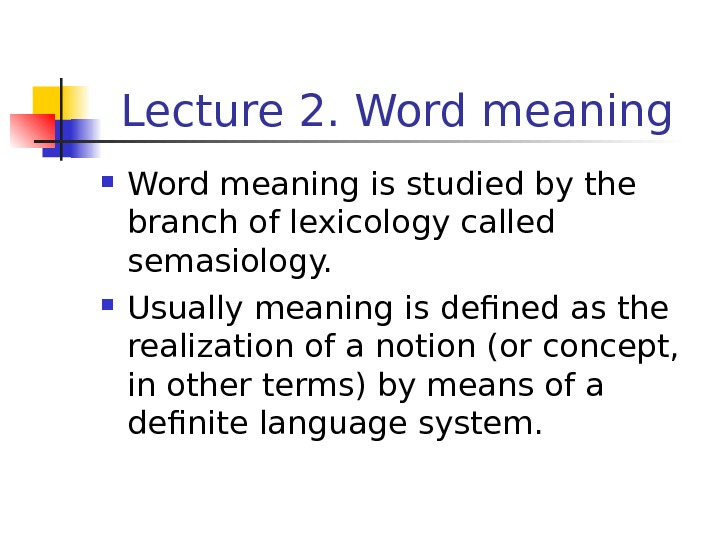

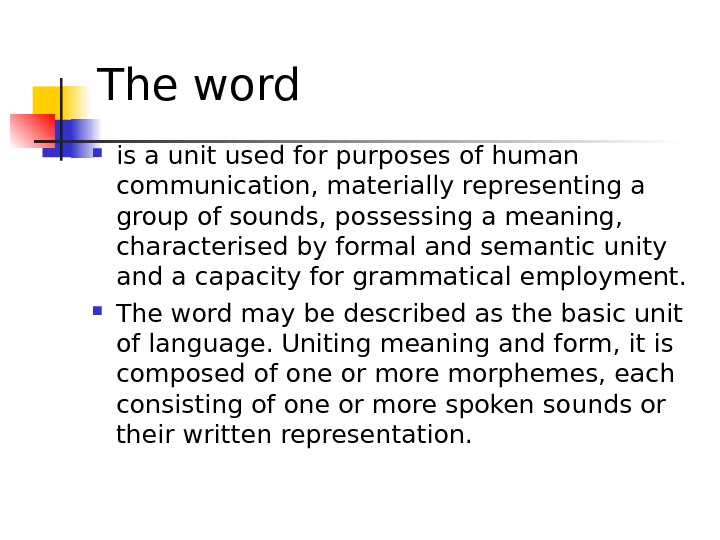
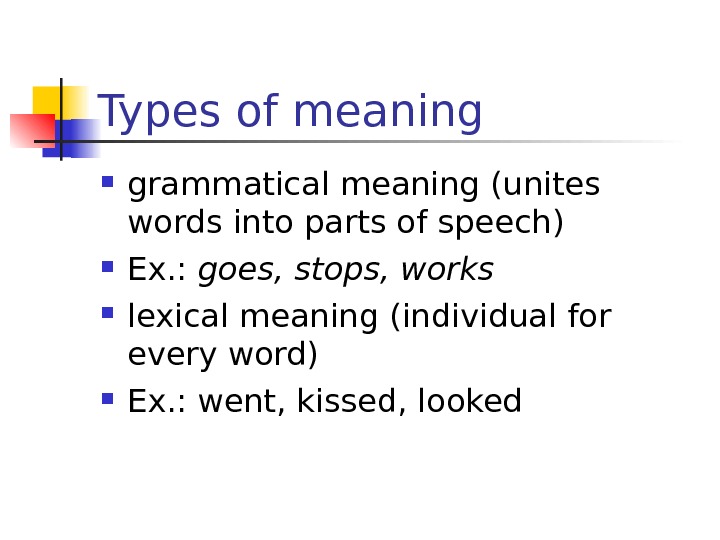
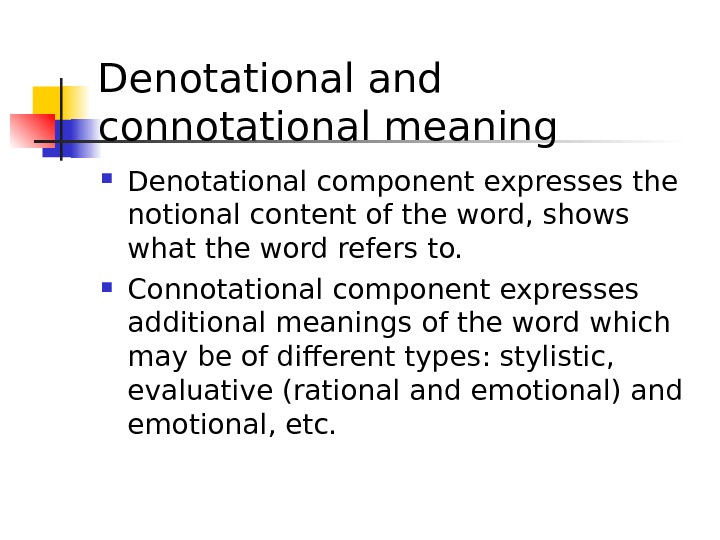




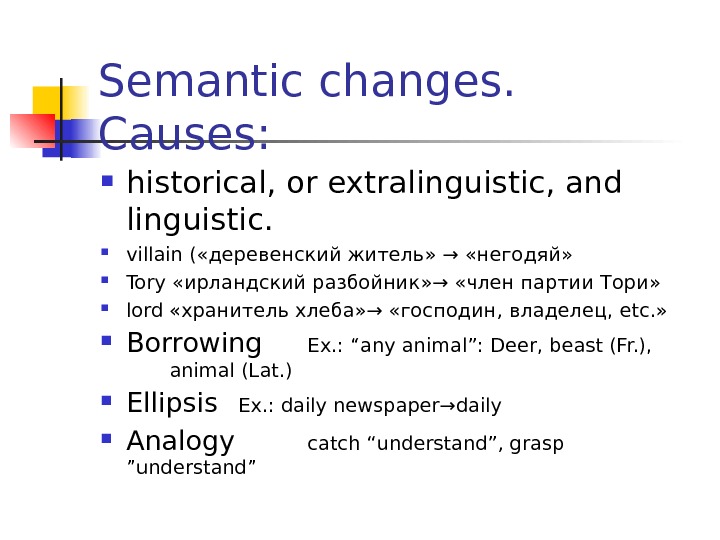
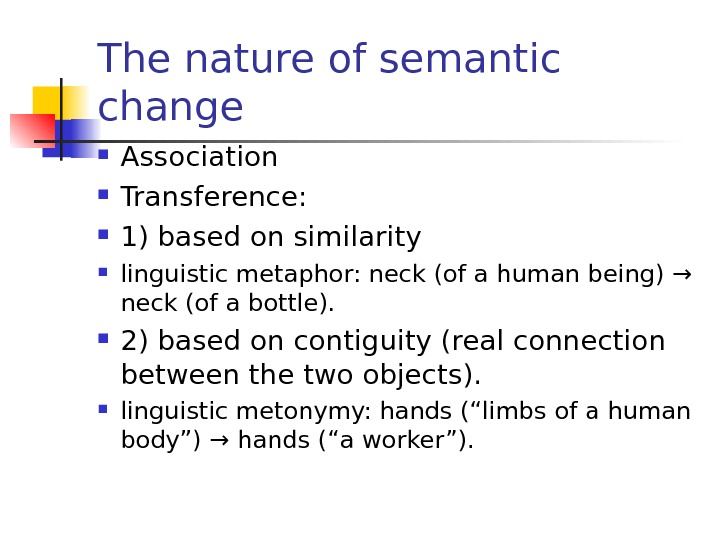
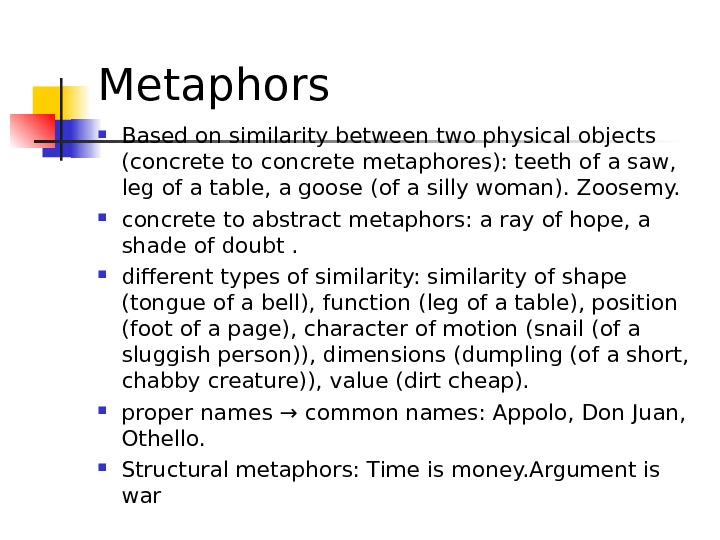



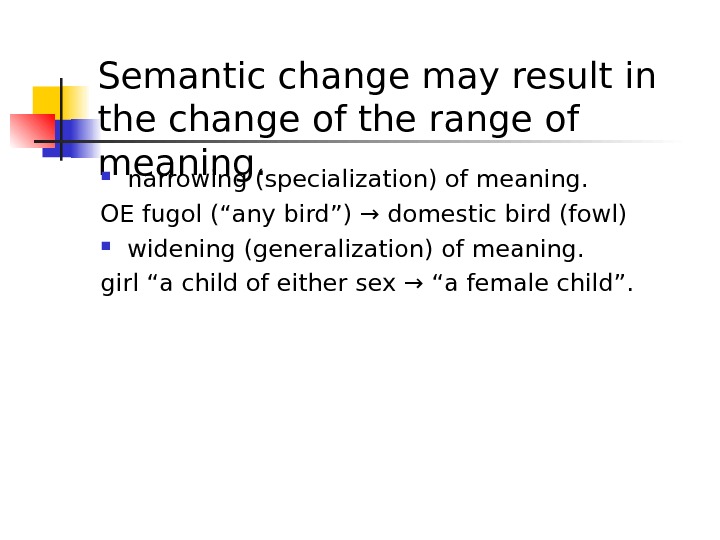

Noun
How do you spell that word?
“Please” is a useful word.
Our teacher often used words I didn’t know.
What is the French word for car?
Describe the experience in your own words.
The lawyer used Joe’s words against him.
She gave the word to begin.
We will wait for your word before we serve dinner.
Verb
Could we word the headline differently?
tried to word the declaration exactly right
See More
Recent Examples on the Web
Despite the red flags, hundreds of investors were receiving their dividends on time and word was spreading.
—
For Lin, surviving sepsis left him determined to make sure that the word gets out about sepsis — and not just in English.
—
Hayes became the first woman to earn the honor in 1977, earning the title after her Grammy win for best spoken word recording for Great American Documents.
—
The Clue: This word starts with a consonant and ends with a vowel.
—
The word comes in the wake a ransomware attack that diverted attention from the company’s plans to address lagging profitability.
—
Because such people possessed no special skill or status, the word gradually fell into disrepute.
—
Detroit police on Monday called for help from the public – a week after Kemp on Jan. 23 reported Kelly missing and began spreading the word via social media and notifying news outlets.
—
The word Tuesday was that more than 12,000 tickets had been sold.
—
Tennessee passed a bill that is seen as possibly banning most drag performances in the state, although a federal judge temporarily blocked it last week on the basis that it was too vaguely worded to draw boundaries.
—
On Thursday, the meeting in New Delhi of the foreign ministers of the Group of 20, representing the world’s largest economies, failed to release a joint agreement due to opposition from China and Russia on wording about the Ukraine war.
—
Despite the changes, top Democrat in the Arkansas House said the bill was worded too vaguely.
—
What that percentage is will need to be calculated on a basis aligned with the nature of the product, the nature of the generative AI app, and the nature of how the product placement is worded.
—
Make sure to word your instructions carefully.
—
How is the city’s referendum worded?
—
In addition, how a query was worded influenced the accuracy of the model’s response.
—
The players all share a loose but focused way about them, words infielder David Fletcher used to describe the clubhouse.
—
See More
These examples are programmatically compiled from various online sources to illustrate current usage of the word ‘word.’ Any opinions expressed in the examples do not represent those of Merriam-Webster or its editors. Send us feedback about these examples.











![Meaning and Sound-formare not identical
different
EX. dove - [dΛv]... Meaning and Sound-formare not identical
different
EX. dove - [dΛv]...](https://documents.infourok.ru/2d0c9b9d-1c12-4da2-8c1e-80496902c301/slide_10.jpg)









































